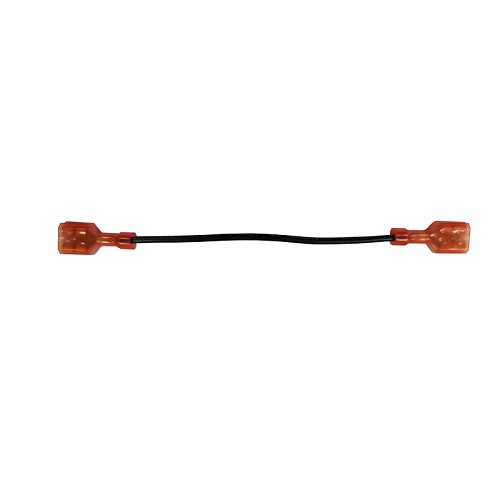 The Fues harness is a connection wire specifically designed for splice fuses; The product uses Te 2-520184-2 Connector and UL1007#18AWG wire with a length of 3 inches. Connectors, wires and lengths as well as colors can be customized according to requirements.
The Fues harness is a connection wire specifically designed for splice fuses; The product uses Te 2-520184-2 Connector and UL1007#18AWG wire with a length of 3 inches. Connectors, wires and lengths as well as colors can be customized according to requirements.
parameter:
Product model | Fuse harness |
Current rating | 10A AC/DC max |
Voltage rating | 300V AC/DC max |
Temperature range | 80℃ |
length | 3 inches |
Packaging & Shipp | |
Packaging | PE bag per pcs Customized packaging is available |
Carton size | 40cm*30cm*25 cm. Customized carton is available |
Shipping by air | 2-7days |
Shipping by vessel | 10-25days depend on the port of destination |
Logistics and transportation | sea transportation/air transportation/land transportation |
Payment method | TT |
Minimum order quantity | 200pcs |
Delivery time | 15~25D |
Supply capacity/month | 50000PCS |
The term "fuse harness" typically refers to a wiring harness that includes fuses as part of an electrical system. The advantages of using a fuse harness in various applications, such as automotive or industrial, include:
Overcurrent Protection: Fuses in the harness are designed to break the circuit in case of excessive current, protecting the connected devices and preventing electrical fires.
Circuit Integrity: Fuses help maintain the integrity of individual circuits. If a fault occurs in one circuit, it doesn't affect the entire system, as the fuse for that specific circuit will blow, isolating the issue.
Ease of Troubleshooting: In the event of a failure or malfunction, fuses can be easily inspected and replaced. This simplifies the troubleshooting process compared to dealing with more complex electrical components.
Cost-Effective: Fuses are relatively inexpensive components, making fuse harnesses a cost-effective solution for providing protection in electrical systems.
Safety: Fuses enhance the safety of electrical systems by preventing overloads and short circuits. This is crucial in applications where safety is a primary concern.
Modularity: Wiring harnesses with fuses often have a modular design, making it easier to add or modify individual circuits without affecting the entire system.
Compliance with Standards: The use of fuse harnesses helps meet safety and regulatory standards by incorporating proper overcurrent protection measures.
Fuse harnesses find applications in various industries and systems where electrical protection and distribution are crucial. Some common application areas include:
Automotive: In vehicles, fuse harnesses are extensively used to protect electrical circuits and components from overcurrent. They are present in cars, trucks, motorcycles, and other automotive systems.
Industrial Machinery: Fuse harnesses are employed in industrial equipment and machinery to safeguard electrical circuits from overloads and short circuits. This includes manufacturing equipment, robotics, and other automated systems.
Aerospace: Aircraft and spacecraft utilize fuse harnesses to protect critical electrical systems on board. The aerospace industry relies on these components to ensure the safety and reliability of electrical circuits in aviation and space exploration.
Marine: Boats and ships use fuse harnesses to protect electrical systems from faults, especially in marine navigation, communication, and control systems.
Consumer Electronics: Some consumer electronic devices incorporate fuse harnesses to protect internal circuits. This can include appliances, audio equipment, and other electronic devices.
Power Distribution: Fuse harnesses are essential in power distribution systems to protect circuits from overloads and faults. This is applicable in residential, commercial, and industrial power distribution networks.
Renewable Energy: In solar panels, wind turbines, and other renewable energy systems, fuse harnesses are employed to protect electrical components and ensure the safe and efficient operation of the systems.
Rail Transportation: Trains and other rail vehicles use fuse harnesses to protect electrical systems from issues like short circuits and overcurrent, ensuring the safe operation of rail transportation.
Telecommunications: Fuse harnesses are used in telecommunication infrastructure to protect circuits and equipment from electrical faults, contributing to the reliability of communication networks.
Medical Equipment: Certain medical devices and equipment incorporate fuse harnesses to provide electrical protection, ensuring the safety and reliability of healthcare equipment.